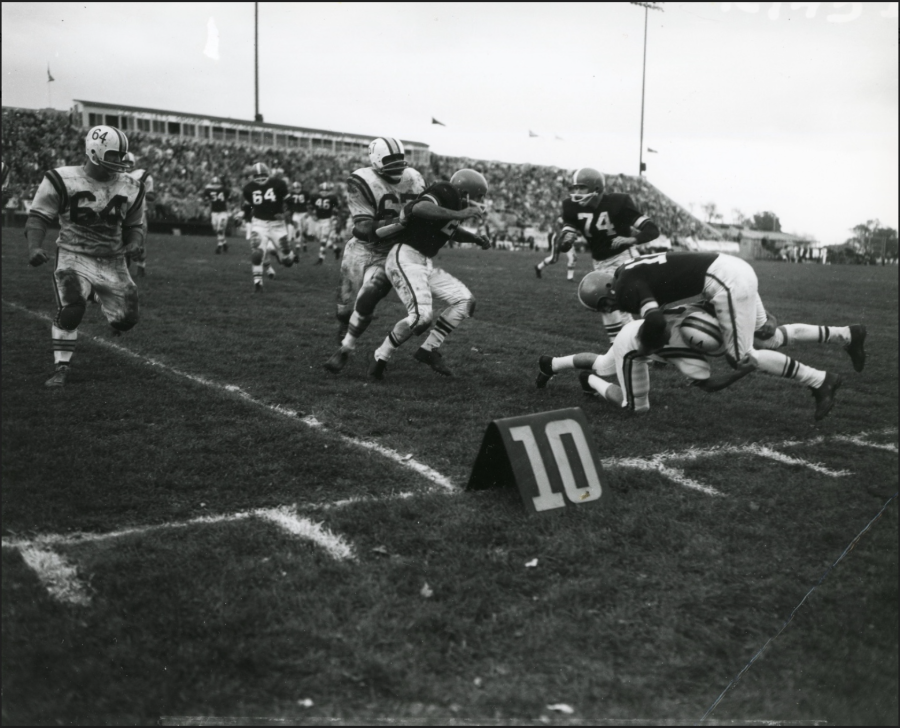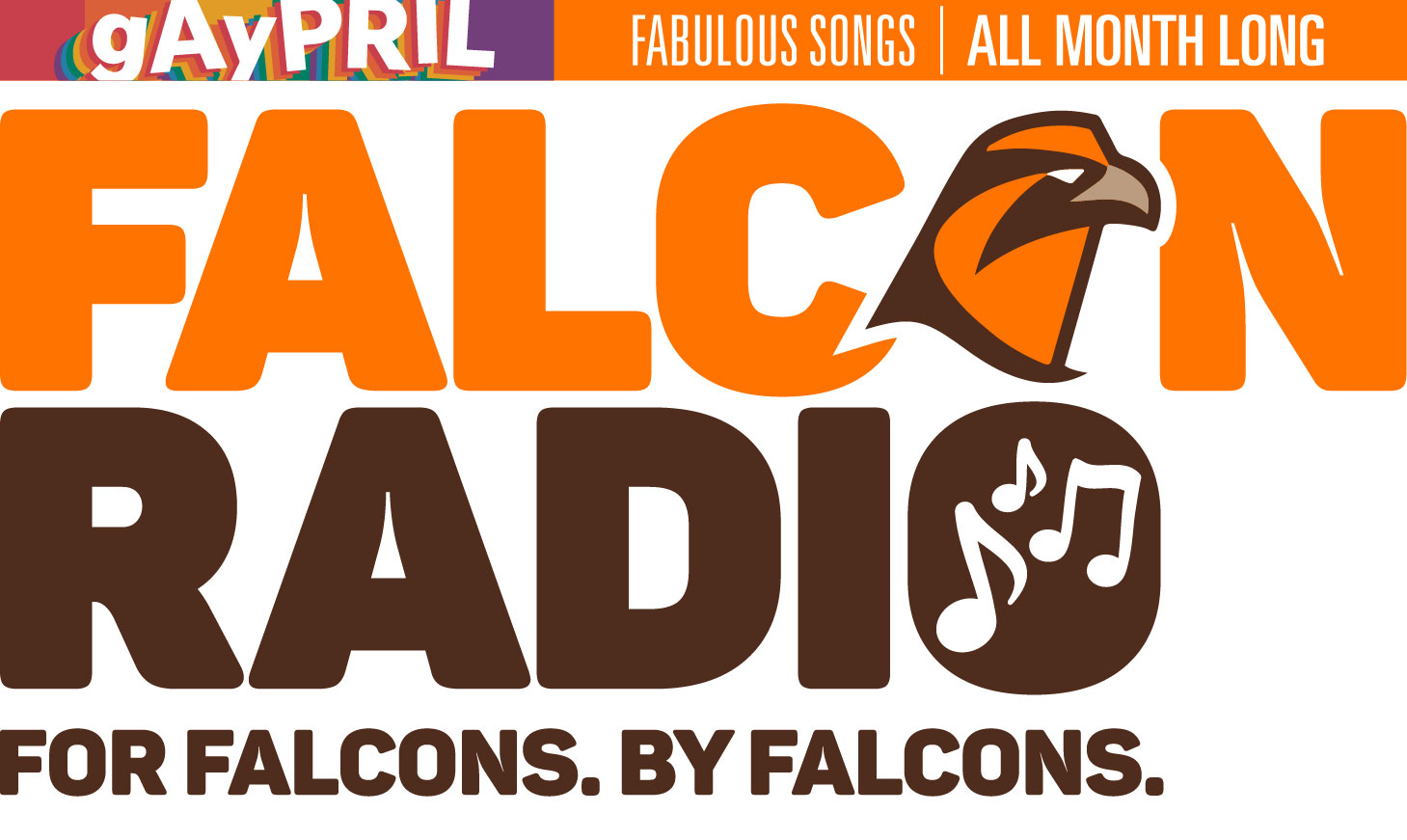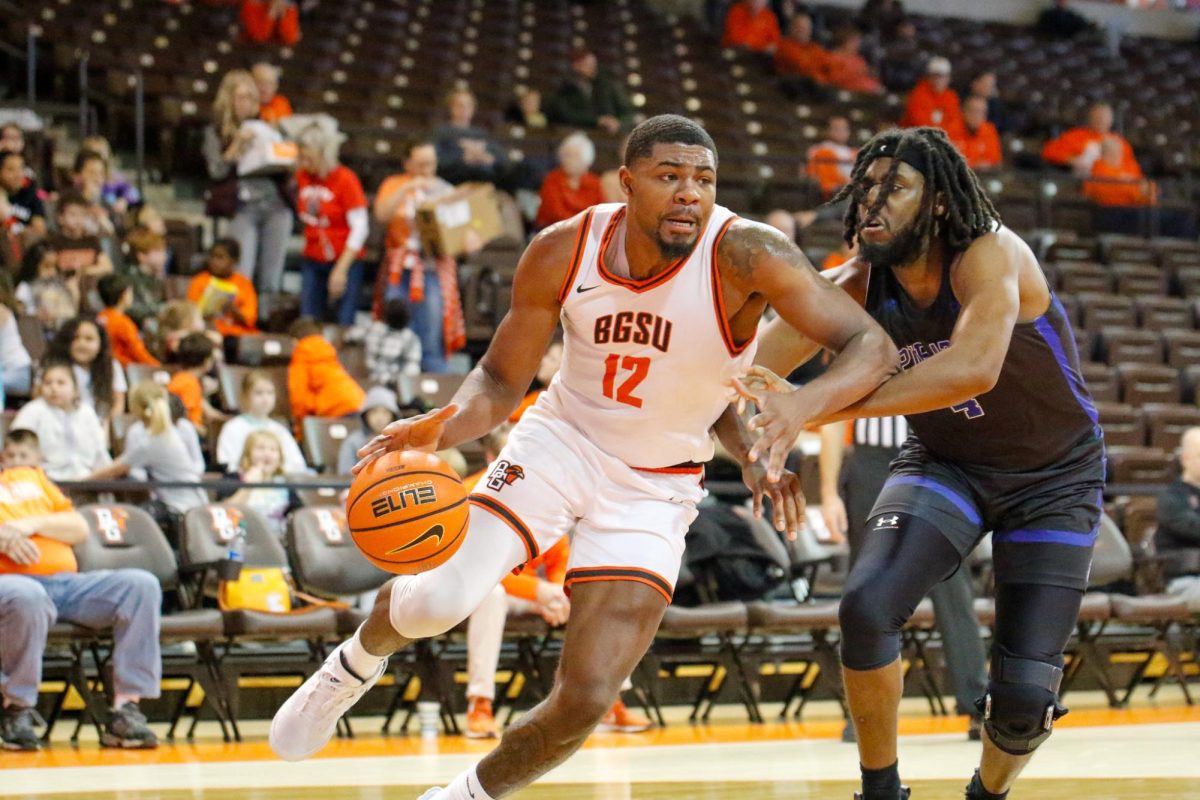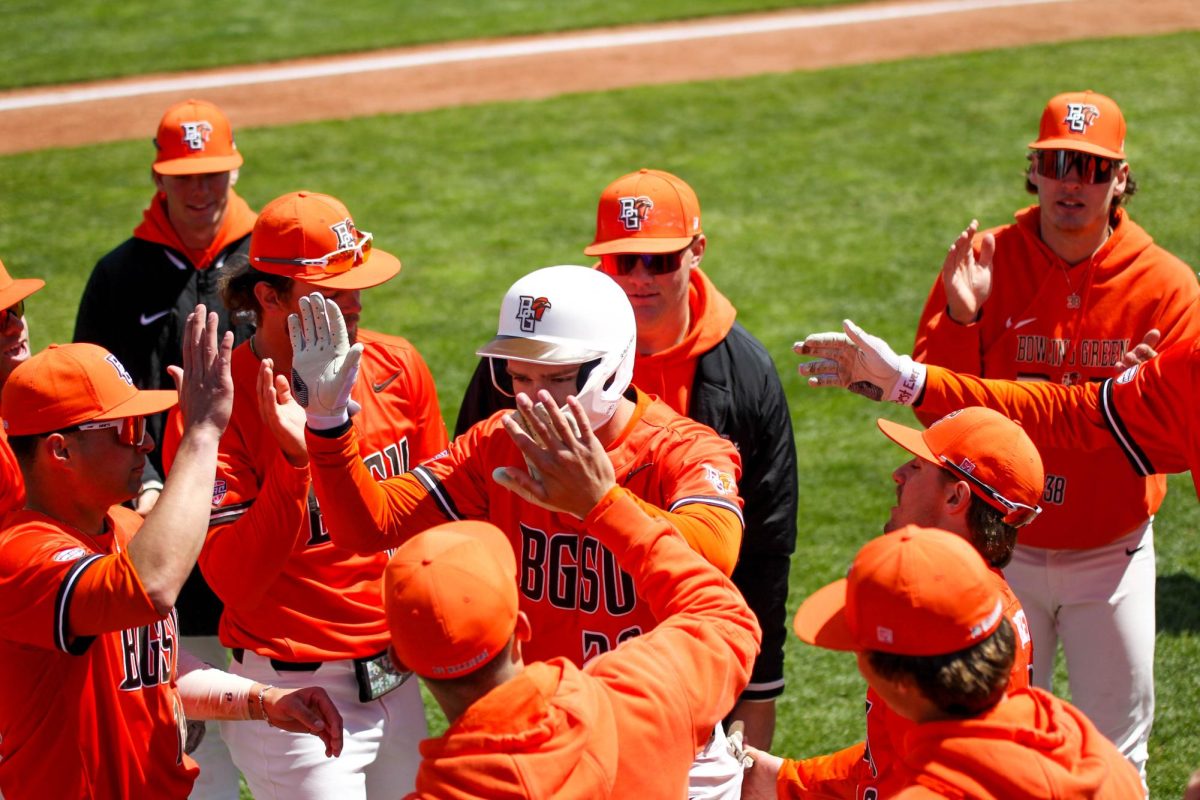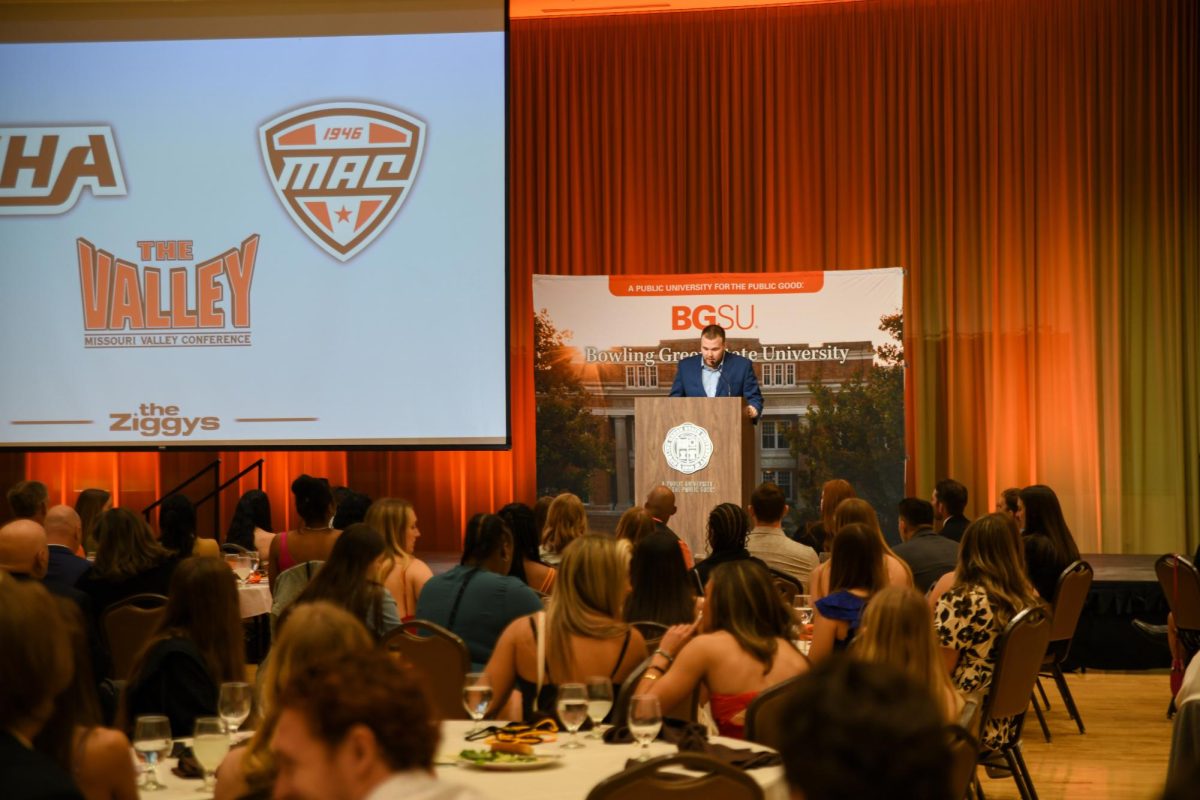Football Fields through the Ages
September 14, 2022
A staple point of homecoming is attending the football game, but over the past 100 years Bowling Green State University’s stadium view has changed.
In 1922, home games were not played on campus, according to BGSU’s Center for Archival Collections. The first homecoming crowd had to travel just to Ridge Street School, for the games.
One year later at homecoming, a new field was designated as BGSU’s official playing field, located behind University Hall – University Field. For the first 14 years it was simply a football field surrounded by a track.
“Unlike today when we say stadium it means both the field and the bleachers, here the term stadium refers only to the bleachers,” Allison Brandeberry, the Athletics Archivist for the Center for Archival Collections at BGSU said.
University Field added wooden bleachers that held up to 1,000 students soon after. But after ten years of usage and a growing student population, more seats were needed.
BGSU coaches and an engineer decided to visit a new stadium built for Fremont High School to come up with new designs to implement in Bowling Green.
In 1937, a new concrete seating structure was dedicated and University Field officially became the University Stadium.
The stadium stood 17 tiers high and 300 feet long, with a press box on top and concession stands underneath the 3,148 seats, according to a 1953 BG News Article.
Over time BGSU added more seats to the stadium. Stand were added on the south and west side of the field, but it simply couldn’t keep up with the demand of people wanting to attend the football games. That’s when the university decided to build a new stadium further east.
The field witnessed 42 football seasons and six Mid-American Conference championships until its final game in October of 1965, when the team was ready to move into their new home.
In 1966, BGSU completed construction on its $2.8 million project later named the Doyt L. Perry Stadium.
It wasn’t until April of 1971 the old stadium was demolished, making way for a new beginning for the part of campus currently known as Carillon Park.
“The field will become a campus beauty spot – lined with trees and dotted with shrubs and flowers – stretching out in front of the University’s new $4.5 million library,” a 1971 article in the BG News said.
A campus beauty spot that students now walk every day as they head to class, that holds almost 100 years of sports history.
“This year is the 85th anniversary of the University Stadium and the 99th anniversary of University Field – the field where Doyt Perry played football as a quarterback for BGSU in the early 1930s and the 1959 National Championship team played, and many other notable football players,“ Brandeberry said.
The Center for Archival Collections recently discovered short reels of film footage from both the 1937 stadium dedication ceremony and Homecoming in the collection of a faculty member at the time. Brandeberry said they are being digitized and will be available online in the near future.


